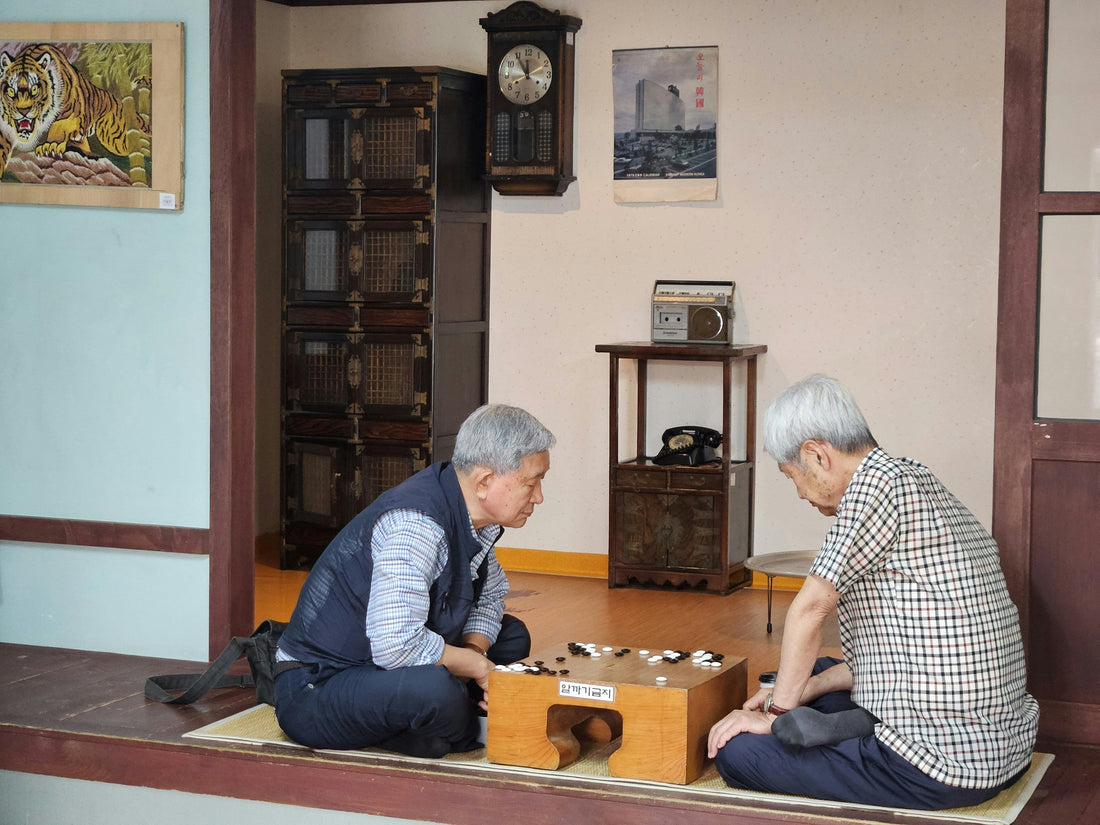
The Korean Tradition of Go
Daebak InternsShare
A Game of Stones and Balance
The game of Go, or baduk (바둑) in Korean, looks deceptively simple: a grid, black and white stones, and two players. The rules are straightforward each side takes turns placing stones, aiming to control the largest share of the board. But this simplicity hides extraordinary depth. With each move, possibilities branch out in ways no human could fully calculate, and strategies unfold across hours of play.
Unlike chess, which is about cornering and capturing the king, baduk is about influence and balance. The goal is not to eliminate but to surround, to coexist with the opponent while gradually securing territory. That difference explains why baduk has long carried a philosophical weight in Korea. It teaches patience, foresight, humility, and an appreciation of long-term vision values deeply rooted in Korean culture.
Baduk in Korean History
In Korea, baduk (바둑) has been part of intellectual life for centuries. During the Joseon dynasty (1392–1897), it was favored by Confucian scholars, who valued it as a form of self-cultivation. To play well required restraint, strategy, and careful judgment, much like governing or studying the classics.
But the game was not limited to the aristocracy. Villagers played as well, scratching a 19×19 grid into dirt and using seeds or pebbles as stones. That made baduk both universal and deeply personal: a pastime of kings and scholars, but also of farmers and laborers. For rulers, the board symbolized statecraft one rash move could unravel everything. For commoners, it was a space to test patience and sharpen the mind.

Professionalization and the Rise of the Gisa (기사)
Modern Korea took baduk into the professional era. The Korean Baduk Association (한국기원, Hanguk Giwon) was founded in 1955, giving structure to competitions and training. The word giwon (기원) literally means “baduk house” a place where players gather, study, and compete. From these halls, a new generation of professionals, known as gisa (기사), emerged.
Cho Hunhyun, often called the father of modern Korean baduk, trained in Japan before returning to dominate international matches in the 1970s. His student, Lee Changho, became one of the greatest players in the history of Go. Nicknamed the “Stone Buddha” for his calm and precise style, Lee’s dominance in the 1990s brought Korea to the top of the global stage. Their rivalry, both competitive and mentor-student, became a national fascination.
By then, specialized academies had sprung up across Korea, with children training intensively to become professional players. The discipline mirrored Korea’s broader educational culture: long hours, structured study, and a deep respect for mastery.
AlphaGo and the Challenge of AI
In 2016, Seoul hosted one of the most famous baduk matches in history: Lee Sedol versus AlphaGo, an artificial intelligence developed by Google DeepMind. Koreans tuned in nationwide to watch a beloved grandmaster face a machine.
AlphaGo’s victory, winning four out of five games, was shocking. For many, it felt like a glimpse into a future where human intuition might no longer reign supreme. Yet Lee Sedol’s brilliant win in the fourth game a move later nicknamed “God’s Hand” (신의 한 수, sinui han su) showed the irreplaceable spark of human creativity. That single victory was celebrated across Korea, not only as a win on the board but as proof of the human spirit.
Since then, AI has become a training partner rather than a threat. Professional players analyze AI moves, studying unconventional strategies to deepen their own understanding. Far from ending the game, technology opened new horizons.
Baduk in Korean Culture Today
Today, baduk (바둑) is alive in both traditional and modern settings. Elderly players gather at parks and local giwon halls, while younger generations log onto online platforms like Tygem and Fox Baduk to play instantly with opponents worldwide. Families bring out boards during holidays, and the game still appears in Korean dramas and novels as a metaphor for life’s delicate balance.
The black-and-white stones, quietly contesting space, symbolize contrasts: yin and yang, competition and coexistence, risk and patience. That symbolic depth is one reason baduk continues to resonate in Korean society.

Korea still produces world-class gisa, though the field has grown more competitive with the rise of China. Domestic interest remains strong thanks to televised matches, corporate sponsorships, and government support. Efforts also promote baduk in schools, presenting it as a way to strengthen concentration and problem-solving in children, much like chess in Western contexts.
For readers curious about Korean culture from games like baduk to modern products and trends platforms like Daebak offer a glimpse into how tradition and modernity connect in everyday life.
Conclusion
The story of baduk in Korea is one of continuity and adaptation. From the royal courts of Joseon to village dirt boards, from Cho Hunhyun’s battles to Lee Sedol’s famous stand against AlphaGo, the game has mirrored Korea’s resilience and creativity.
It has never been about sudden victories. Instead, baduk teaches that the strongest position comes from steady growth, balance, and long-term vision. In that sense, it reflects not only a game but a philosophy of life.

As long as someone sits at the board, picks up a stone, and places it down with quiet intention, baduk will remain more than a pastime in Korea. It will remain a cultural touchstone a living dialogue between history, strategy, and human imagination.

